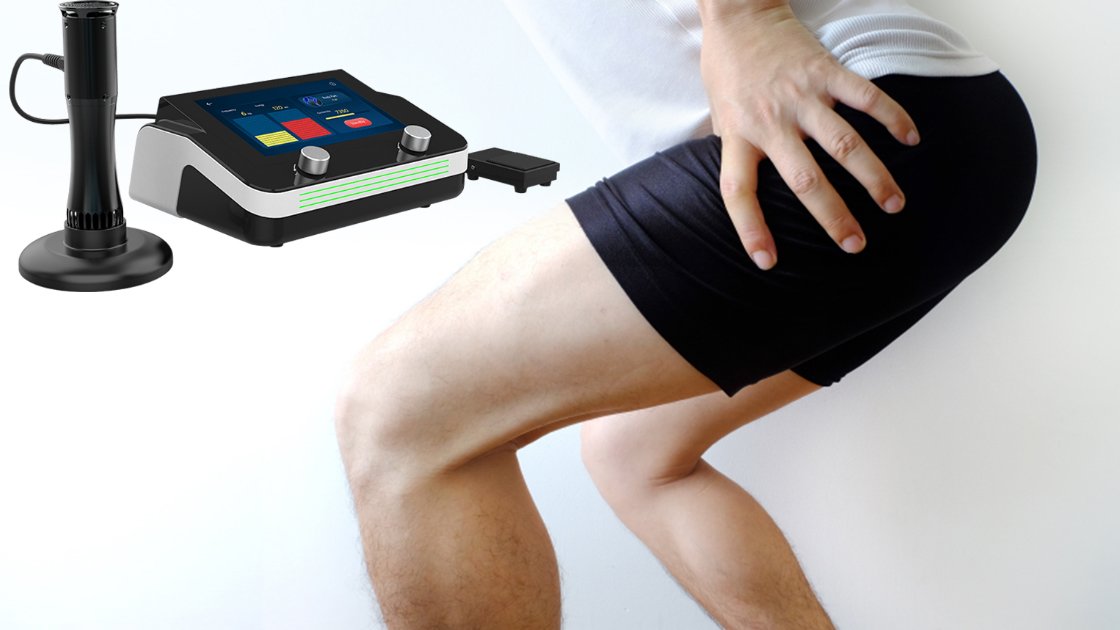Introduction: What is HO (Heterotopic Ossification)?
Heterotopic Ossification (HO) is a condition where bone tissue forms in areas of the body where it shouldn’t, typically in muscles or soft tissues. It’s most commonly seen after trauma, such as joint injuries, surgeries (like hip or knee replacements), or spinal cord injuries. While the body’s natural healing response typically involves tissue repair, in this case, it overcompensates by creating unwanted bone growth. This abnormal bone formation leads to pain, restricted mobility, and long-term complications. Given the difficulties in treating HO, patients often face limited options for managing the condition. Shockwave therapy has emerged as a promising treatment, offering a non-invasive way to manage HO symtoms and improve recovery.
Traditional Treatments for HO: Limitations and Challenges
Traditional treatments for HO include medication, physical therapy, and in some cases, surgical interventions. Nonsteroidal anti-inflammatory drugs (NSAIDs) can help reduce pain and inflammation, while physical therapy aims to maintain mobility in affected joints. In severe cases, surgery may be necessary to remove the ectopic bone. However, these treatments have limitations: medications often only mask the pain, therapy may not fully address the abnormal bone growth, and surgery carries risks of further injury and complications. For many patients, the results can be underwhelming, leaving them seeking alternative, more effective treatments.
What is Shockwave Therapy?
Shockwave therapy is a non-invasive treatment that uses acoustic waves to stimulate healing in the body. The therapy works by delivering high-energy sound waves to targeted areas, which stimulates circulation, increases cell metabolism, and accelerates tissue repair. Commonly used for musculoskeletal conditions like tendonitis and plantar fasciitis, shockwave therapy has recently gained attention as a potential treatment for conditions like HO. By promoting circulation and breaking down tissue at the cellular level, shockwave therapy encourages the body to heal naturally, addressing both soft tissue and, potentially, the bone formation associated with HO.
How Shockwave Therapy Can Help with HO
Shockwave therapy can be beneficial in managing HO by targeting the abnormal bone growth and surrounding tissues. The sound waves help break up the calcium deposits that form in the muscles or soft tissues, reducing the excess bone formation and preventing it from worsening. Additionally, shockwave therapy increases blood flow to the affected area, promoting faster healing of surrounding tissues and reducing pain and inflammation. By stimulating cellular regeneration, shockwave therapy can prevent the body from continuing to lay down bone tissue where it shouldn’t, providing a therapeutic solution for HO patients.
Benefits of Shockwave Therapy for HO
Shockwave therapy offers several distinct advantages for patients with HO.
- Non-invasive Treatment: Unlike surgery, shockwave therapy doesn’t involve cuts, needles, or long recovery times. It is an outpatient procedure with minimal disruption to daily life.
- Pain Reduction: By targeting the source of pain, shockwave therapy helps alleviate discomfort caused by the abnormal bone growth and muscle stiffness associated with HO.
- Increased Mobility: The therapy can improve blood circulation and reduce muscle stiffness, enhancing joint flexibility and function—vital for patients struggling with restricted movement.
- Accelerated Recovery: Shockwave therapy helps promote tissue repair and regeneration, speeding up recovery from the effects of HO and reducing the chances of further complications.
- Long-lasting Results: While several sessions may be required, many patients experience long-term relief from symptoms after undergoing shockwave therapy, significantly improving their quality of life.
Considerations and Next Steps: Is Shockwave Therapy Right for You?
Shockwave therapy is not suitable for every patient. It is essential to consult with a healthcare provider who can assess your specific condition and determine whether shockwave therapy is an appropriate treatment. Candidates for shockwave therapy typically include those who have experienced HO following joint surgery or trauma and are seeking a non-invasive treatment to manage their symptoms. It’s also crucial to remember that multiple sessions may be required for optimal results, and shockwave therapy should be seen as part of a comprehensive treatment plan.
To sum up, shockwave therapy offers a promising solution for patients with Heterotopic Ossification. By addressing the root causes of the condition—abnormal bone growth and muscle stiffness—it provides a non-invasive, effective way to reduce pain, improve mobility, and promote healing. For individuals struggling with the limitations of traditional treatments, shockwave therapy represents a breakthrough in managing HO. Speak with your doctor today to see if this cutting-edge treatment could be right for you.
